The Found Object Friday Series:
We artists do love our collections, don’t we? Ever since I was a child, I’ve been drawn to small, curious things—trinkets unearthed at flea markets, foraging for smooth stones and bits of metal on long walks, objects that seem to hum—waiting to share their own stories. Long before I knew what I’d make of them, I gathered these artifacts from the past.
As it turns out, I’m not alone in this. So many artists I admire share this impulse to collect—oddities, treasures, and fragments that make their way into their work or simply live in the studio as quiet companions.
In this ongoing series, I’m thrilled to introduce you to guest artists and the objects they love. Some names you may recognize; others might be new discoveries. Through their responses to a few simple questions, each one offers a peek at their collections and art practices in this virtual show-and-tell: the objects that caught their eye, the stories behind them, and sometimes how they plan to use them in their art or home. Be sure to check out their bios and links to find out more about each artist.
Today’s Found Object Friday artist is K. Wayne Thornley. When I decided to do the original series on found objects, I immediately thought to invite K Wayne Thornley, who was the first artist featured in February, 2014. As an assemblage artist, I knew he must have a collection of unique and interesting objects to chose from, and as a painter and mixed media artist whose style I so greatly admired, I just plain wanted the opportunity to hear and see what he finds inspiring. His style and his sense of humor still catch my attention in his posts to this day.
Welcome back K Wayne!
Do you still have the original object you shared with us in 2014?
I do still have one of the sashes I found in 2014. The other two have been cut up and pieces snatched to use in various collage and assemblage work over the years. As I write this, I am still a little stunned more that 10 years have past since that post back in 2014.
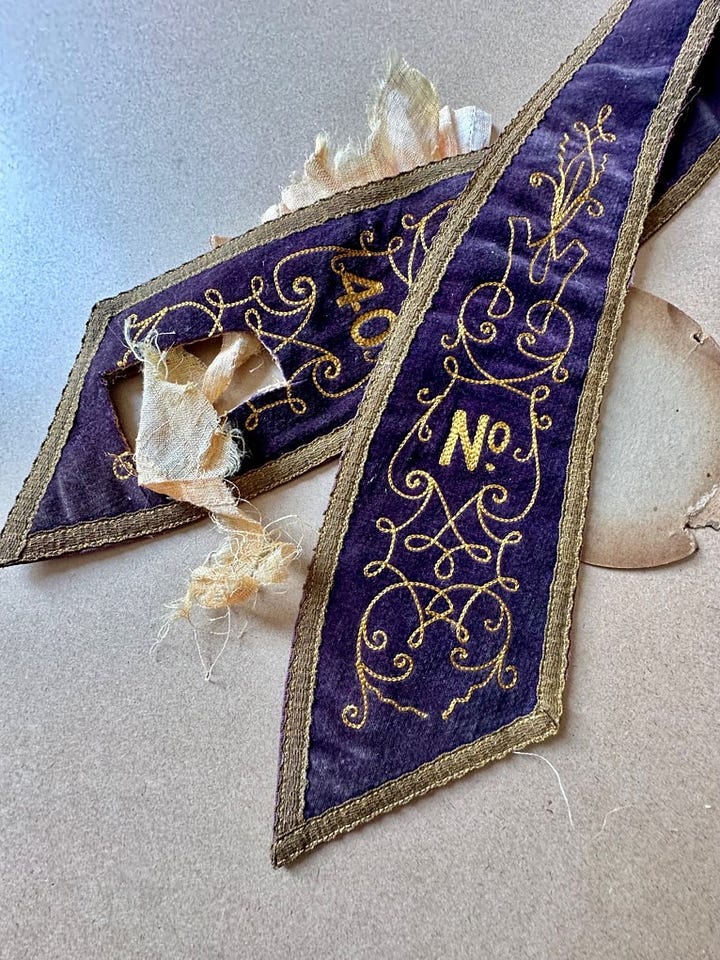
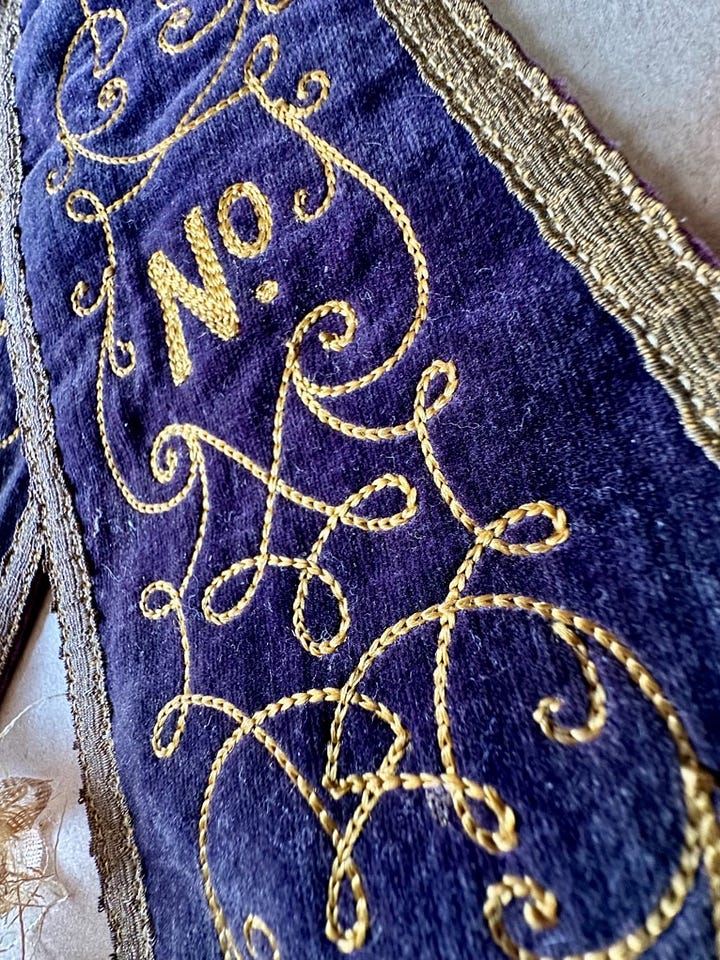
What object/s are you sharing with us now?
The object I am sharing for this Found Object Friday is one of those things all mixed-media makers keep on their forager’s radar. It is a handwritten ledger of all customers and purchases from a drugstore in Johnston, SC, which opened in 1924. This 500-page ledger records purchases starting March 5, 1961.
Tell us a little about where you found the object-- was it a gift, a purchase, or something you found?
This ledger was given to me by a dear artist friend, Betsy, whose grandfather opened the store. Betsy said she got a phone call from a man who had recently purchased the shuttered building for renovation. He explained that the attic of the store was filled with old paperwork, typewriters, and store furnishings. Because of the store’s history, he felt some family member might want some of these things. Through townspeople familiar with the store, he connected with Betsy. On the first of several trips to the store attic, she returned with her vehicle packed full of ledgers and other treasures. Betsy is an accomplished assemblage artist herself, so, she has the eye for the good stuff. After doing some initial sorting through the materials, she texted and invited me to her studio to look at her haul. I arrived to find Betsy sitting on the floor sorting through stacks of ephemera. I looked at the stacks of ledgers in front of her. “Please take some,” she said. After talking about her grandfather, her memory of the store, and what still remained in the attic, she gifted me with three journals. (I know, don’t hate me.)
Why did it catch your attention?
The ledgers not only contain page after page of handwriting, the blue-gray cloth covers, the design work printed on the back and front of each, endpapers with cryptic numbers and notes, and the hidden binding materials waiting to be harvested are all materials I will use in future works.
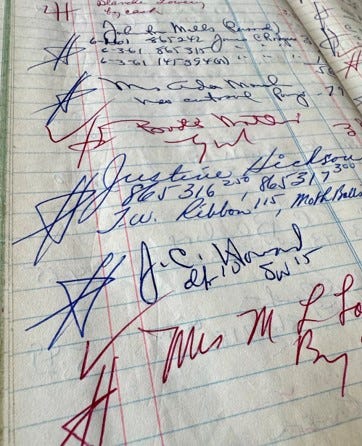
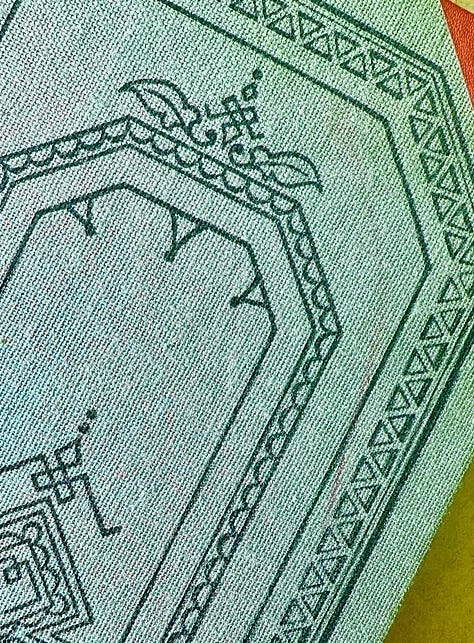

Is there any symbolic or deeper meaning represented in the object?
Handwriting, especially very old, cursive writing, has always fascinated me. More than just another form of mark-making, handwriting, to me, is evidence. Evidence that someone was here, sort of a modern version of the marks and symbols found on the cave walls of Lascaux. The move from handwriting to keyboarding in school classrooms makes handwritten passages even more important and inspiring.
How has your style as artist and collector evolved since the original series in 2014?
Looking back to 2014 and the work I was making at that time, I think the same themes of memory and memory lost, the importance we place on objects we keep or collect, and the fate of things left behind art still a part of my creative process. I have expanded on those themes over the last decade, experimented with new materials, and, hopefully, learned some new techniques, but those main ideas are still present in my current work. I feel I still have things to say about those themes and the human experience.
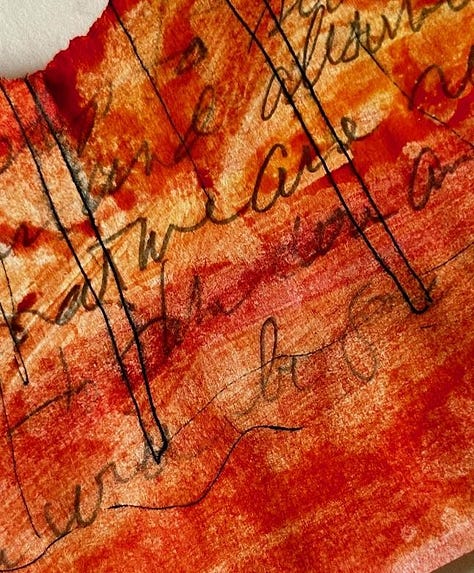
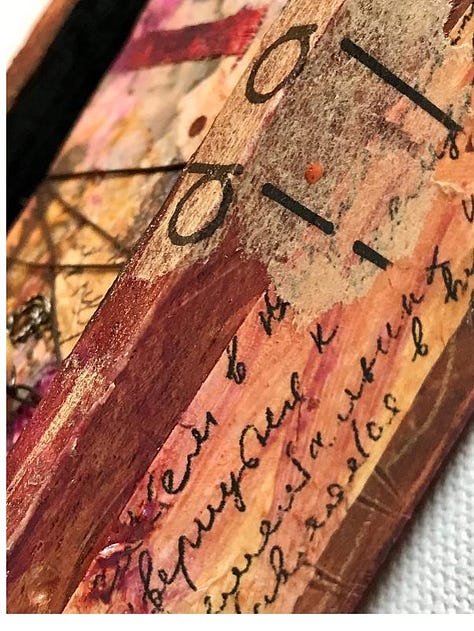
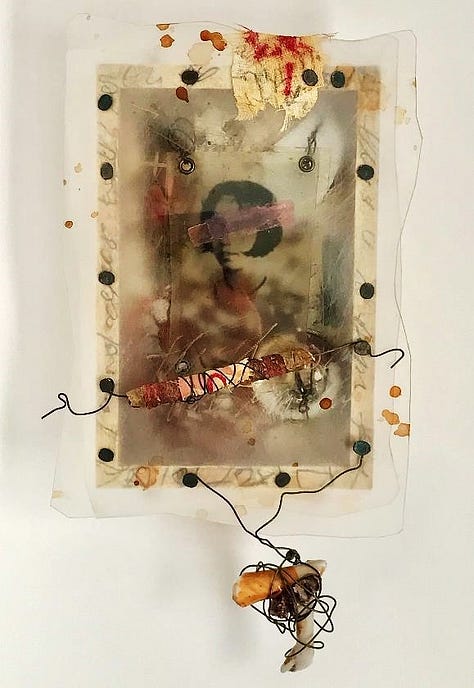
Thank you K. Wayne. You honor the generosity of your friend in gifting you these journals well with the work you’ve created.
Bio: Thornley is a mixed media artist whose work spans several media categories, but he spends most of his creative time as a painter, an assemblage artist, and a wire wrangler. His work has been juried into local, state, and national exhibitions and he has helped organize and participate many solo and group shows throughout the Southeast.
Thornley is a graduate of the University of South Carolina where he studied studio arts, but graduated with a Bachelor’s Degree in Advertising and Public Relations in order to get at “real job.”
When not at his real job, Thornley works in his home studio in Columbia, SC. Recently, he has been teaching a series of project-based creativity classes, the ARTMAKERS BOOTCAMP series, with art partner Lucy Bailey.
Artist’s Statement
My work deals largely with life-shaping power memory, memory loss, and memory-imbued objects that ultimately become someone else’s detritus. Wandering figures in abstract landscapes began to appear in my paintings after my father passed away from complications of Alzheimer’s Disease. That experience also influenced my assemblage and constructions which focus on using old photographs, thrift store relics, salvaged clothing, wire, rusted metals and other found objects that were once important or useful to someone at some point in time.
My current work still begins with this baseline of thought, but it is continuously evolving. Living on this planet with so many cultures and belief systems and the objects, textiles and icons that support them is fascinating. I love the juxtaposition of the familiar and the foreign. Objects, both mysterious and mundane. Images of family members alongside acquired ancestors from flea markets. Shapes, words and symbols that trigger positive or negative emotions, depending on the life experiences one brings to the exchange between art object and the viewer.
IG: kwaynethornley
Be sure to hit the heart button to show K Wayne our appreciation and let us know how the work impacted you in the comments below.




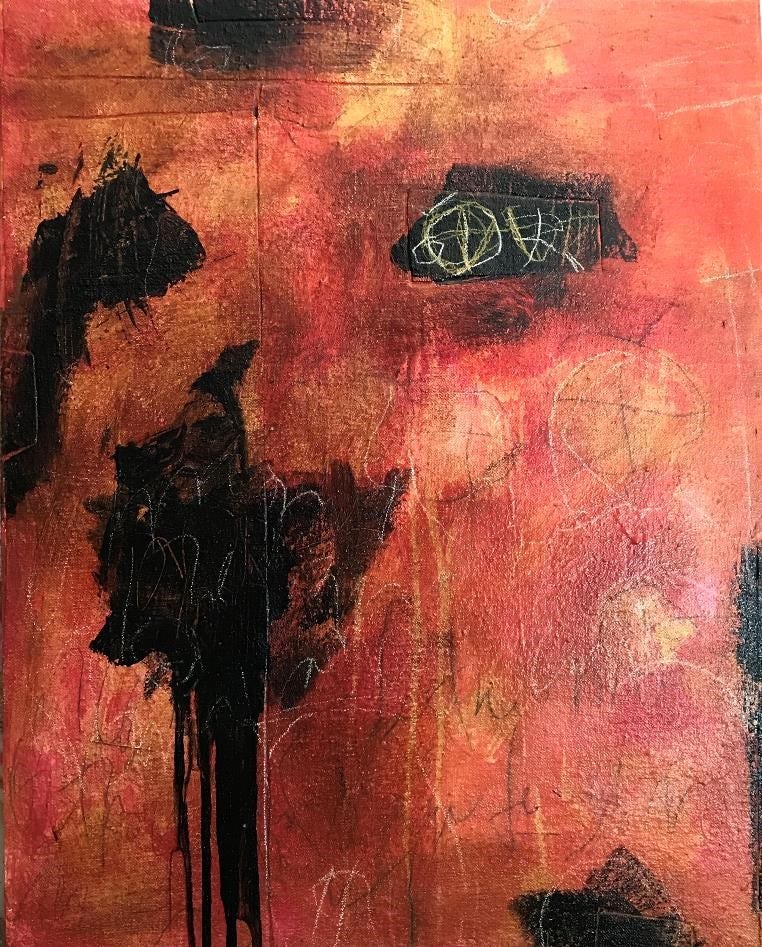

My envy, in this case, is a huge compliment. Such a stellar vintage "find" is not common and this particular ledger is beautiful as is. From the perspective of a mixed media, collage, or assemblage artist, the creative value of it's cover, papers, ink samples, printed text and hand written contents is endless. The artist who shared such a bounty of treasures is certainly generous.
Great gifts! That ledger looks pristine and what memories it holds. I loved his comment about 'evidence'...I keep an evidence journal to remind me that, despite the twists and turns, things do and are work/ing out for me. Hmm, maybe I should go out scouting for a ledger!